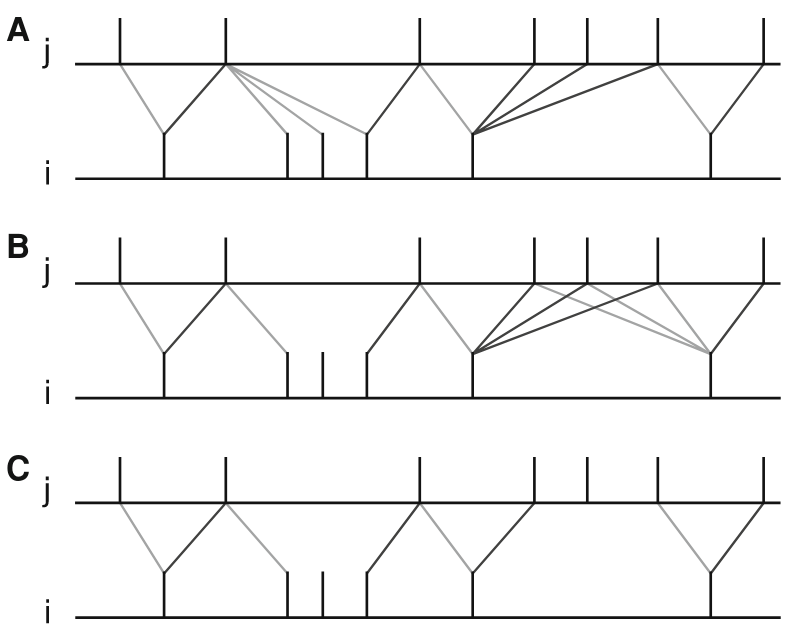stdp_nn_restr_symm_synapse
Synapse type for spike-timing dependent plasticity with restricted symmetric nearest-neighbour spike pairing scheme
Description
stdp_nn_restr_synapse is a connector to create synapses with spike time dependent plasticity with the restricted symmetric nearest-neighbour spike pairing scheme (fig. 7C in [1]).
When a presynaptic spike occurs, it is taken into account in the depression part of the STDP weight change rule with the nearest preceding postsynaptic one, but only if the latter occured not earlier than the previous presynaptic one. When a postsynaptic spike occurs, it is accounted in the facilitation rule with the nearest preceding presynaptic one, but only if the latter occured not earlier than the previous postsynaptic one. So, a spike can participate neither in two depression pairs nor in two potentiation pairs. The pairs exactly coinciding (so that presynaptic_spike == postsynaptic_spike + dendritic_delay), leading to zero delta_t, are discarded. In this case the concerned pre/postsynaptic spike is paired with the second latest preceding post/presynaptic one (for example, pre=={10 ms; 20 ms} and post=={20 ms} will result in a potentiation pair 20-to-10).
The implementation relies on an additional variable - the postsynaptic eligibility trace [1] (implemented on the postsynaptic neuron side). It decays exponentially with the time constant tau_minus and increases to 1 on a post-spike occurrence (instead of increasing by 1 as in stdp_synapse).

Figure 7 from Morrison, Diesmann and Gerstner
Original caption:
Phenomenological models of synaptic plasticity based on spike timing”, Biological Cybernetics 98 (2008). “Examples of nearest neighbor spike pairing schemes for a pre-synaptic neuron j and a postsynaptic neuron i. In each case, the dark gray indicate which pairings contribute toward depression of a synapse, and light gray indicate which pairings contribute toward potentiation. (a) Symmetric interpretation: each presynaptic spike is paired with the last postsynaptic spike, and each postsynaptic spike is paired with the last presynaptic spike (Morrison et al. 2007). (b) Presynaptic centered interpretation: each presynaptic spike is paired with the last postsynaptic spike and the next postsynaptic spike (Izhikevich and Desai 2003; Burkitt et al. 2004: Model II). (c) Reduced symmetric interpretation: as in (b) but only for immediate pairings (Burkitt et al. 2004: Model IV, also implemented in hardware by Schemmel et al. 2006)
References
Parameters
Name |
Physical unit |
Default value |
Description |
|---|---|---|---|
d |
ms |
1ms |
Synaptic transmission delay |
lambda |
real |
0.01 |
|
tau_tr_pre |
ms |
20ms |
|
tau_tr_post |
ms |
20ms |
|
alpha |
real |
1.0 |
|
mu_plus |
real |
1.0 |
|
mu_minus |
real |
1.0 |
|
Wmax |
real |
100.0 |
|
Wmin |
real |
0.0 |
State variables
Name |
Physical unit |
Default value |
Description |
|---|---|---|---|
w |
real |
1.0 |
Synaptic weight |
pre_trace |
real |
0.0 |
|
post_trace |
real |
0.0 |
|
pre_handled |
boolean |
true |
Source code
The model source code can be found in the NESTML models repository here: stdp_nn_restr_symm_synapse.